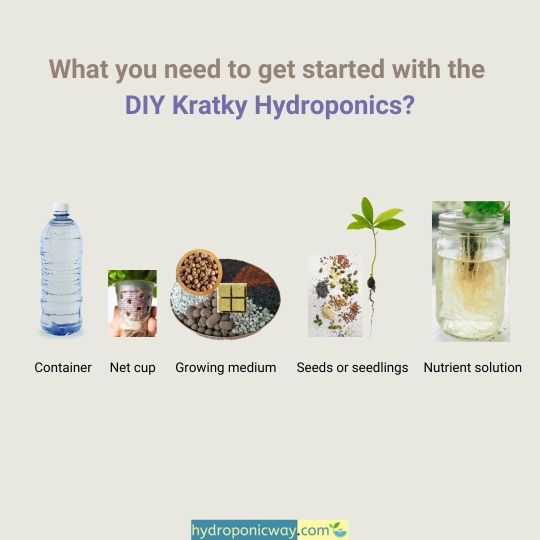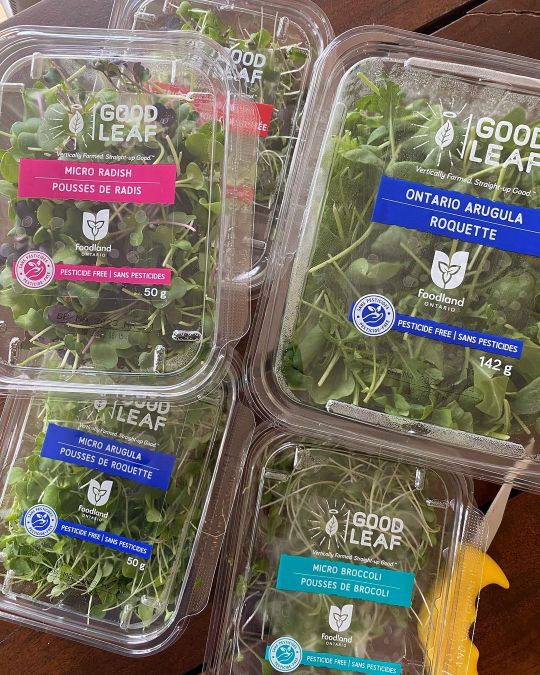#verticalfarming
Explore tagged Tumblr posts
Text
Market Report on Vertical Farming Products: Understanding Size, Share, and Growth Trajectories
The global vertical farming market size is expected to reach USD USD 24.95 billion by 2030, according to a new report by Grand View Research, Inc. It is expected to expand at a CAGR of 20.1% from 2023 to 2030. Increased use of Internet of Things (IoT) sensors for producing crops is likely to spur market demand over the forecast period. Information obtained from the sensors is stored on the cloud and analyzed to perform the required actions. The growing automation in agriculture and increasing use of big data and predictive analytics for maximizing yields are also likely to drive the market.
Vertical farming is effective in ensuring stability in crop production and maintaining reliability even in adverse climatic conditions. It provides multiple benefits over the traditional farming technique, such as less use of water, the lesser need for agrochemicals, and low dependence on agricultural labor. Vertical farming makes use of metal reflectors and artificial lighting to maximize natural sunlight.
Genetically modified organisms and the environmental and health effects of pesticides and other non-natural substances that are used for increasing agricultural production have encouraged consumers to adopt organic foods. According to the Organic Trade Association, the U.S. organic industry sales increased by around 5% in 2019 owing to the increased investment in infrastructure and education. As per the Organic Foods Production Act of 1990, the handlers and growers of organic products need to comply with the regulations.
Artificial lighting helps in extending the hours of natural daylight, which further increases the health, growth rate, and yield of the plants. Artificial lighting such as high-pressure sodium lighting and LED lighting can extend the availability of crops (throughout a season). LED lighting systems produce a dual-band color spectrum and generate low heat. They are anticipated to witness significant growth over the forecast period.
A hydroponic system is a method of growing plants without soil. A hydroponic system eliminates the need for pesticides and artificial ripening agents and helps in producing nutritionally-rich vegetables. However, factors such as high initial investment and fewer crop varieties are likely to restrain the market growth.
For More Details or Sample Copy please visit link @: Vertical Farming Market Report
Vertical Farming Market Report Highlights
The escalating production of biopharmaceutical products is anticipated to drive the market
The shipping container segment accounted for the largest market share in 2022. Shipping container-based farming uses less water than traditional farming with drip irrigation. Shipping containers can be easily stacked, modified, recycled, and refurbished at a lower cost. Additionally, the excess availability of unused shipping containers across the region will likely influence segment growth over the forecast period
The hardware segment accounted the largest market share in 2022. The hardware plays a significant role in maintaining the environment of the indoor farms. The segment is further categorized into climate control systems, lighting systems, sensors, and irrigation systems, which enables the cultivation of indoor-grown crops
The fruits vegetables, & herbs segment is also expected to have considerable growth over the forecast period. The increasing cultivation of commonly grown fruits and vegetables in greenhouses is driving the segment growth. Crops grown in vertical farming provide maximum profit to companies involved in their cultivation
Based on offering, the climate control segment is expected to witness high growth over the forecast period as the growth of crops can be controlled by monitoring and adjusting the concentrations of minerals
By growing mechanism, the aeroponics segment is expected to observe considerable growth over the forecast period as the aeroponics facilitate fast growth in plants (under normal conditions)
The North American regional market is expected to witness significant growth over the forecast period owing to the expansion of small-scale, commercial vertical farms
Gain deeper insights on the market and receive your free copy with TOC now @: Vertical Farming Market Report
We have segmented the global vertical farming market report based on structure, growing mechanism, crop category and region.
#VerticalFarming#UrbanAgriculture#SustainableFarming#AgTech#Hydroponics#Aeroponics#SmartFarming#ControlledEnvironmentAgriculture#FoodSecurity#GreenTech#UrbanFarming#CropProduction#InnovativeAgriculture#SustainableDevelopment#ClimateSmartAgriculture#AgriTechTrends#VerticalFarmingGrowth#AgriculturalInnovation#FutureFarming#ResourceEfficientFarming
2 notes
·
View notes
Text

Learn more: https://hydroponicway.com/how-to-grow-plants-with-the-kratky-hydroponics
The Kratky hydroponic growing technique is simple, effective and easy to use.
However, it can be improved upon with these tips.
#sustainability#gardening#farming#hydroponicfarming#hydroponics#hydroponicsystem#gardeningtips#verticalfarming#aeroponics#aquaponics#agriculture#agriculturetechnology#agritechnology#garden#indoorfarming#sustainable#gardening101#agritech#urbanfarming#verticalgarden#indoorgarden#future#diy#food#healthyfood#hydroponic#hydroponicgarden#growlight
10 notes
·
View notes
Text
Vertical farming bankruptcies, layoffs, and closures in 2023. Failures because: "Easy money discouraged efficiency", "Questionable business models", "Fundamental unit economics"
2 notes
·
View notes
Photo

Lunchtime with @texmcdoggo #DontTellMum @goodleaffarms greens - all of them! Olive oil, pinch of Parm and #nonapiasbalsamicreduction #ChefTex suggested steak bits… #HomeAlone #BoysWeekend #Salad #Greens #Lunch #HealthyEating #VerticalFarming #Sprouts (at Toronto, Ontario) https://www.instagram.com/p/CqLneSwOFod/?igshid=NGJjMDIxMWI=
#donttellmum#nonapiasbalsamicreduction#cheftex#homealone#boysweekend#salad#greens#lunch#healthyeating#verticalfarming#sprouts
2 notes
·
View notes
Photo

Rising sea levels force architects and planners to reconsider the future of coastal cities, demanding solutions like floating cities, modular infrastructure, and vertical farming to ensure adaptability. By blending water management and resilient design, we can transform cities into environments that embrace water, integrating it into their ecosystems. Future cities will thrive using nature-based solutions, creating dynamic, self-sufficient urban spaces capable of withstanding environmental changes. This shift represents a response to the crisis and an opportunity to build sustainable, innovative, and resilient urban landscapes.
#resilientcities#floatingarchitecture#urbanfutures#climateadaptation#sustainablecities#modulararchitecture#greeninfrastructure#floodresilience#verticalfarming#adaptivecities#watermanagement#coastalresilience#urbanplanning#environmentaldesign#futureproof#floods#water
0 notes
Text
𝗨𝗿𝗯𝗮𝗻 𝗙𝗮𝗿𝗺𝗶𝗻𝗴 𝗠𝗮𝗿𝗸𝗲𝘁: 𝗖𝘂𝗹𝘁𝗶𝘃𝗮𝘁𝗶𝗻𝗴 𝘁𝗵𝗲 𝗙𝘂𝘁𝘂𝗿𝗲 𝗼𝗳 𝗦𝘂𝘀𝘁𝗮𝗶𝗻𝗮𝗯𝗹𝗲 𝗙𝗼𝗼𝗱 𝗣𝗿𝗼𝗱𝘂𝗰𝘁𝗶𝗼𝗻
Urban Farming Market Size is forecast to reach $ 281275 Million by 2030, at a CAGR of 3.81% during forecast period 2024-2030.
𝐃𝐨𝐰𝐧𝐥𝐨𝐚𝐝 𝐑𝐞𝐩𝐨𝐫𝐭 𝐒𝐚𝐦𝐩𝐥𝐞: 👉 https://lnkd.in/gdQ-WptM
𝐊𝐞𝐲 𝐓𝐫𝐞𝐧𝐝���:
🔹 𝗥𝗮𝗽𝗶𝗱 𝗨𝗿𝗯𝗮𝗻𝗶𝘇𝗮𝘁𝗶𝗼𝗻 & 𝗟𝗼𝗰𝗮𝗹 𝗗𝗲𝗺𝗮𝗻𝗱:As cities expand, the demand for locally sourced, fresh #produce grows. Urban farming meets this need while reducing carbon #footprints and transportation costs.
🔹𝗧𝗲𝗰𝗵𝗻𝗼𝗹𝗼𝗴𝗶𝗰𝗮𝗹 𝗜𝗻𝗻𝗼𝘃𝗮𝘁𝗶𝗼𝗻: Advances in vertical farming, hydroponics, aeroponics, and IoT-driven controlled-environment agriculture are boosting productivity and #resource efficiency. These innovations not only maximize yields but also significantly cut water and energy usage.
🔹𝗚𝗼𝘃𝗲𝗿𝗻𝗺𝗲𝗻𝘁 𝗦𝘂𝗽𝗽𝗼𝗿𝘁 & 𝗜𝗻𝘃𝗲𝘀𝘁𝗺𝗲𝗻𝘁: Strategic #grants, favorable policies, and partnerships (as seen in initiatives by #USDA and global urban farming pioneers) are #catalyzing growth and lowering operational barriers.
𝐆𝐞𝐭 𝐦𝐨𝐫𝐞 𝐢𝐧𝐟𝐨: https://lnkd.in/ghs9bfxx
𝐊𝐞𝐲 𝐏𝐥𝐚𝐲𝐞𝐫𝐬: AppHarvest | AeroFarms | Bowery Farming | BrightFarms
INFARM | Plenty | Crop One Holdings | Iron ox | Gotham Greens
Green Spirit | Riverford Organic Farmers | Abel & Cole | B Corp™
Oddbox | Growing Pro Technologies | Urban Farmers | Jones Food Company | Greenbelt Group | Local Garden | Fresh City | Farm 51 | Agrotech S.A. | Urban Greens | EcoFarms | Cultiva | MetroFarms | VertiCrop
Urban Organics | Harvest Urban Farms | NextGen Farming
✨ (𝐂𝐫𝐞𝐝𝐢𝐭 𝐂𝐚𝐫𝐝 𝐃𝐢𝐬𝐜𝐨𝐮𝐧𝐭 𝐨𝐟 𝟏𝟎𝟎𝟎$ 𝐨𝐧 𝐚𝐥𝐥 𝐑𝐞𝐩𝐨𝐫𝐭 𝐏𝐮𝐫𝐜𝐡𝐚𝐬𝐞𝐬 | 𝐔𝐬𝐞 𝐂𝐨𝐝𝐞: 𝐅𝐋𝐀𝐓𝟏𝟎𝟎𝟎 𝐚𝐭 𝐜𝐡𝐞𝐜𝐤𝐨𝐮𝐭) https://lnkd.in/gWgMHpfD

0 notes
Photo

Rising sea levels force architects and planners to reconsider the future of coastal cities, demanding solutions like floating cities, modular infrastructure, and vertical farming to ensure adaptability. By blending water management and resilient design, we can transform cities into environments that embrace water, integrating it into their ecosystems. Future cities will thrive using nature-based solutions, creating dynamic, self-sufficient urban spaces capable of withstanding environmental changes. This shift represents a response to the crisis and an opportunity to build sustainable, innovative, and resilient urban landscapes.
#resilientcities#floatingarchitecture#urbanfutures#climateadaptation#sustainablecities#modulararchitecture#greeninfrastructure#floodresilience#verticalfarming#adaptivecities#watermanagement#coastalresilience#urbanplanning#environmentaldesign#futureproof#floods#water
0 notes
Text
Vertical_Farming Market is experiencing rapid growth
The #Vertical_Farming Market is experiencing rapid growth, fueled by advancements in #Hydroponics, aeroponics, and artificial intelligence. As #Urbanization rises, so does the demand for locally grown, pesticide-free produce. 🌱💡
Read More: https://wemarketresearch.com/reports/vertical-farming-market/1535
#VerticalFarming#UrbanFarming#Hydroponics#Aeroponics#SmartFarming#AgriTech#SustainableAgriculture#IndoorFarming#FarmToTable#GreenTechnology#FutureOfFarming#ClimateSmartAg
0 notes
Text
Urban Gardening Revolution: How Cities Are Becoming Greener
As the world’s population becomes increasingly urbanised, cities are finding innovative ways to combat environmental challenges and improve quality of life. One of the most transformative movements in this regard is urban gardening—a revolution that’s turning grey cityscapes into lush, green sanctuaries. From rooftop gardens to vertical farming and community plots, urban gardening is not only beautifying cities but also addressing critical issues like food security, climate change, and mental well-being.
Here’s how the urban gardening revolution is reshaping urban life and making cities greener than ever.
1. Greening Urban Spaces
Urban gardening transforms underutilised spaces like rooftops, balconies, and abandoned lots into thriving green zones. In dense cities where green spaces are limited, these initiatives provide much-needed relief from the concrete jungle. Rooftop gardens, for instance, are popping up on residential and commercial buildings, creating microhabitats for plants and wildlife.
Vertical gardens, or "living walls," are another innovation, allowing greenery to flourish in areas with minimal ground space. These installations not only enhance aesthetic appeal but also reduce urban heat, improve air quality, and provide insulation for buildings, cutting down on energy use.
2. Tackling Food Security
Food security is a pressing issue in many urban areas, where access to fresh, affordable produce can be limited. Urban gardening addresses this by bringing food production closer to where people live. Community gardens, for example, allow residents to grow their own fruits and vegetables, reducing reliance on imported goods and supporting healthier eating habits.
Innovative methods like hydroponics and aquaponics are also being embraced in urban gardening, enabling food to be grown without soil and using less water. These systems can be set up in small spaces, making them ideal for urban environments. In addition, urban farms are providing fresh produce to local markets, restaurants, and food banks, creating a more sustainable and resilient food system.
3. Combating Climate Change
Urban gardening plays a crucial role in mitigating the effects of climate change. Plants absorb carbon dioxide, filter pollutants, and release oxygen, improving overall air quality. Green roofs and gardens also help combat the urban heat island effect—a phenomenon where cities become significantly warmer than surrounding rural areas due to dense infrastructure and lack of vegetation.
By integrating greenery into city planning, urban gardening reduces the need for energy-intensive cooling systems, lowers greenhouse gas emissions, and contributes to a more sustainable urban environment.
4. Boosting Mental and Physical Health
The benefits of urban gardening extend beyond the environment, positively impacting mental and physical health. Studies have shown that spending time in green spaces reduces stress, improves mood, and enhances cognitive function. Urban gardening provides city dwellers with opportunities to connect with nature, even in highly developed areas.
Gardening is also a great form of physical exercise, promoting fitness and reducing sedentary behaviour. Community gardens encourage social interaction, fostering a sense of belonging and reducing feelings of isolation—key factors in combating urban loneliness.
5. Promoting Community Engagement
Urban gardening initiatives often bring people together, strengthening communities and fostering collaboration. Community gardens, in particular, provide a space for neighbours to work side by side, share knowledge, and build relationships. These gardens often serve as hubs for educational workshops, cultural events, and sustainability programs, creating a sense of shared purpose.
Involving children in gardening projects also helps educate the next generation about sustainability, healthy eating, and environmental stewardship.
6. Urban Gardening Innovations
Technological advancements are driving the urban gardening revolution to new heights. Smart gardening systems, for example, use sensors and IoT technology to monitor soil moisture, temperature, and light levels, allowing gardeners to optimise plant growth with minimal effort.
Startups and architects are also exploring ways to integrate urban farming into the design of residential and commercial buildings. Some futuristic concepts include high-rise farms and neighbourhood greenhouses, blurring the line between urban living and agriculture.
7. Challenges and Opportunities
Despite its many benefits, urban gardening faces challenges such as limited space, high initial costs, and regulatory hurdles. Cities must address these barriers by implementing policies that support urban gardening, such as offering incentives for green roofs, creating zoning allowances for community gardens, and providing resources for education and training.
The opportunities, however, are immense. Urban gardening not only creates greener cities but also contributes to sustainable development goals, including climate action, health and well-being, and reducing inequalities.
Conclusion
The urban gardening revolution is transforming cities into greener, more sustainable, and more liveable spaces. By reimagining how we use urban areas, this movement is addressing critical environmental and social challenges while reconnecting people with nature.
As cities around the world embrace urban gardening, the future looks brighter—and greener. Whether it’s growing food on rooftops, creating living walls, or fostering community through shared green spaces, urban gardening is a powerful tool for building healthier, happier, and more resilient cities.
#UrbanGardening#GreenCities#Sustainability#CityLiving#RooftopGardens#CommunityGardening#VerticalFarming#ClimateAction#EcoFriendly#SustainableLiving#GreenArchitecture#UrbanFarming#NatureInTheCity#EnvironmentalAwareness#SmartCities#GardenLife#SustainableFuture#LivingWalls#GreenSpaces#GrowYourOwnFood
0 notes
Text

Agriculture Farming Solution
Grow Smarter, Grow Stronger with Vatsal Green Environment!
We're here to revolutionize your farming journey with complete, turnkey solutions—customized for YOUR needs. From planning to execution, we’ve got it all covered!
✨ What We Offer: • Protected Structures: Greenhouses, net houses, and shade nets that enhance crop health and boost yields. 🌿 • Post-Harvest Processing: Turn your harvest into profit with value-added products like juices, jams, and snacks. 🍓 • Pan-India Network: Access to buyers, logistics, and export opportunities across India. 🌍
🔑 Why Choose Us? • Sustainable farming practices ♻️ • Expert guidance every step of the way 📚 • Scalable solutions for all types of farms 🌾 • End-to-end support for your success 🚀
Ready to grow? Let’s cultivate success together! 🌟
Learn More: https://bit.ly/3ALA7PF Call Now: +91 78743 79887, +91 75677 79887
#Agriculture#FarmingSolutions#SmartFarming#SustainableFarming#AgriTech#Greenhouses#NetHouse#ShadeNet#FarmGrowth#PostHarvest#ValueAddition#AgriBusiness#FarmInnovation#AgriProcessing#AgriExports#FarmersOfIndia#AgriProducts#FarmSuccess#OrganicFarming#ClimateSmartFarming#AgriPackaging#FarmTech#IndoorFarming#Hydroponics#VerticalFarming#CropYield#FarmersSupportIndia#VatshalGreenEnvironment
0 notes
Text
youtube
The Global Vertical Farming Market is experiencing remarkable growth, with significant projections for the coming years. As traditional farming methods face numerous challenges such as limited arable land, climate change, and water scarcity, vertical farming presents a sustainable and efficient solution to meet the increasing global food demand. This innovative agricultural practice involves growing crops in vertically stacked layers, often integrated into urban environments, using controlled-environment agriculture (CEA) technology. The vertical farming market is set to revolutionize the agricultural sector by providing fresh, locally grown produce with minimal environmental impact.
#verticalfarming#verticalfarmingmarket#agriculturefarming#agriculture#marketresearchreport#acumenresearchandconsulting#agriculturelife#agribusiness#marketresearchcompany#marketresearch#Youtube
1 note
·
View note
Text
Vertical Farming Market Outlook 2030: Innovations and Growth Prospects
The vertical farming market is rapidly growing as urbanization and sustainable agriculture gain prominence.
Get FREE Sample: https://www.nextmsc.com/vertical-farming-market/request-sample
Leveraging technologies like hydroponics, aeroponics, and LED lighting, vertical farms are maximizing crop yield in limited spaces while reducing water usage and pesticide reliance.
With increasing demand for fresh, locally grown produce and the push for greener food production methods, vertical farming is attracting significant investments.
As we move into 2030, expect continued innovation and expansion in this market, paving the way for a more sustainable future in agriculture.
1 note
·
View note
Text

0 notes
Text
The latest innovations in Cannabis products and technology: A comprehensive guide
The cannabis industry has undergone a remarkable transformation in recent years, fueled by continuous advancements in technology and a growing demand for innovative products. As the industry evolves, staying informed about the latest trends in cannabis products and technology is essential for both consumers and businesses.
#CannabisIndustry#CannabisTechnology#CannabisInnovation#CannabisEdibles#VapePens#CannabisTopicals#CannabisBeverages#ExtractionTechniques#PersonalizedCannabis#CannabisCultivation#VerticalFarming#NanoEmulsion#AIInCannabis#BlockchainInCannabis#SustainableCannabis#MedicalCannabis#CannabisFuture
0 notes
Text



क्या आप के पास खेत हैं और नये Polyhouse Farming लगवाना चाहते हैं।
आज ही संपर्क करें : +91 9811459488
#agrotech#plants#crops#agrotec#agricultureequipments#agribusiness#agrolife#agroforestry#agroecology#agronomia#mipaindustries#mipatex#agriculturegk#farmersmarketathome#gardening#growth#harvesttime#tarpaulin#rainpipe#urbanfarming#verticalfarming#farmingindia#raincover#fourcrossmedia#tarpal#carports#shadecover#terracegarden#carport#shadesail
1 note
·
View note
Photo

Vertical farming is a paradigm shift approaching food security in a rapidly urbanizing world. Our proposed food security research center in the Philippines furthers this innovation by integrating resource efficiency, advanced hydroponics, and climate-responsive design into one cohesive system. This tower symbolizes the potential for cities to produce food sustainably without relying on expansive agricultural land. This design also challenges us to rethink urban resilience and how architecture can lead the conversation on solving global challenges. By combining smart systems with purposeful architecture, we aim to bring agriculture back into the city's heart. How can such designs influence policymaking and urban strategies in the future?
#verticalfarming#foodsecurity#urbanresilience#smartdesign#sustainablecities#architecturalinnovation#futurefarming#urbanplanning#greenarchitecture#researchanddevelopment#foodsystems#climateaction#sustainabledevelopment#innovativearchitecture#agriculturetechnology#agriculture#urbanfarming#regenerativeagriculture#agricultureworldwide#sustainablefarming
0 notes